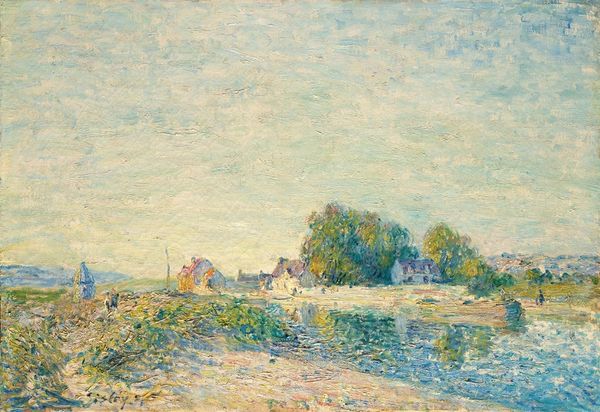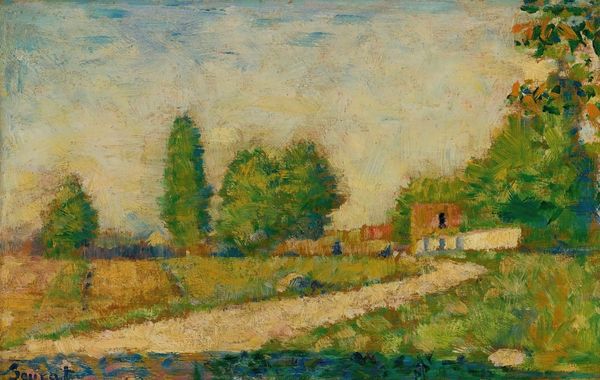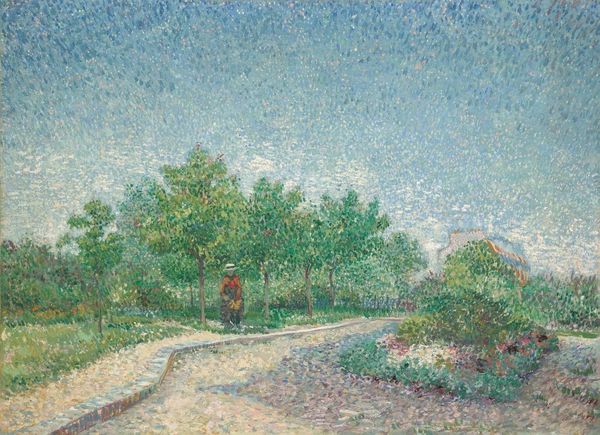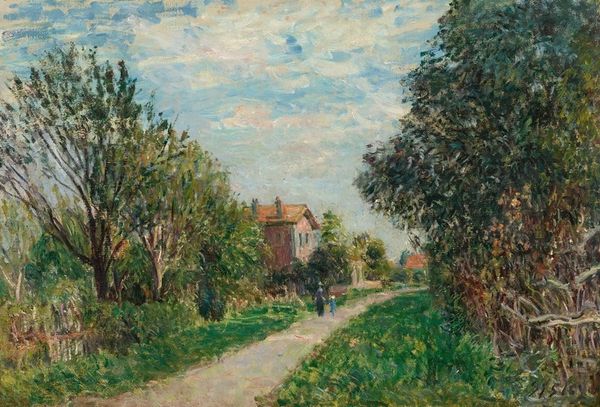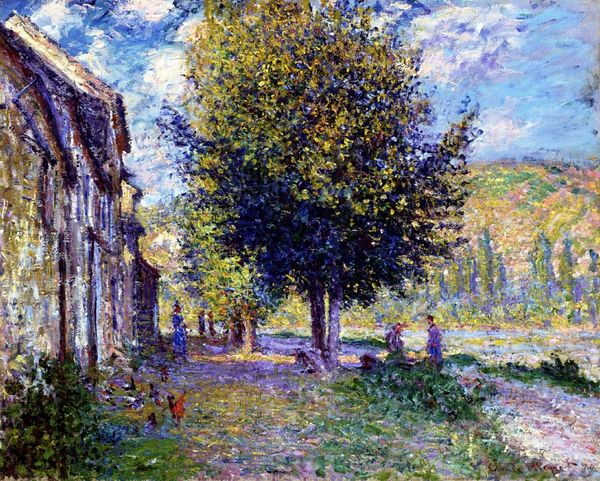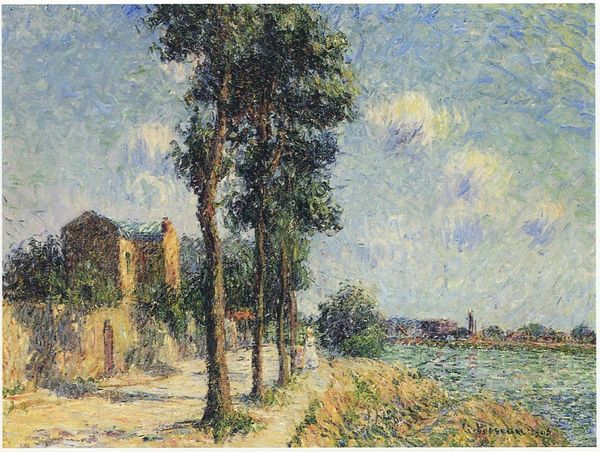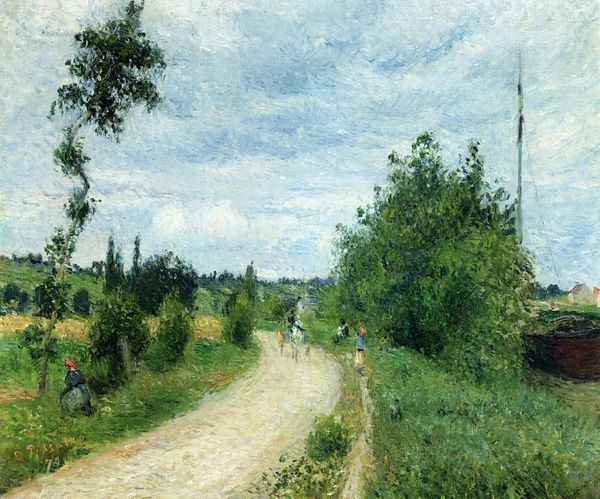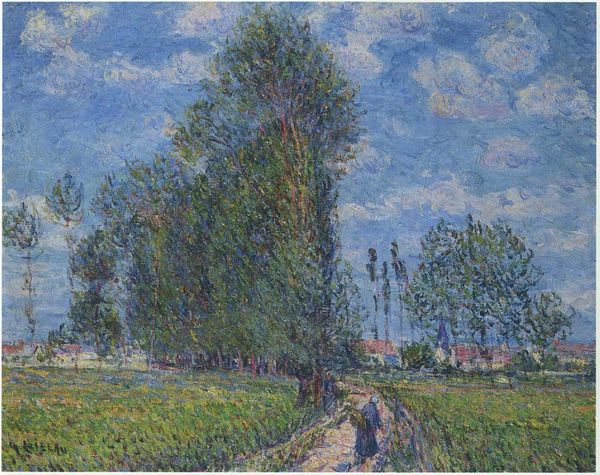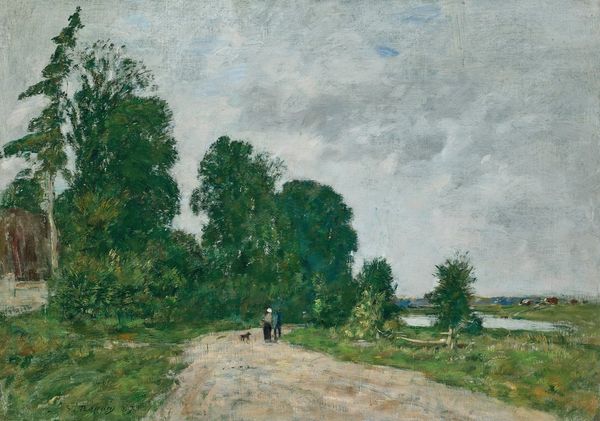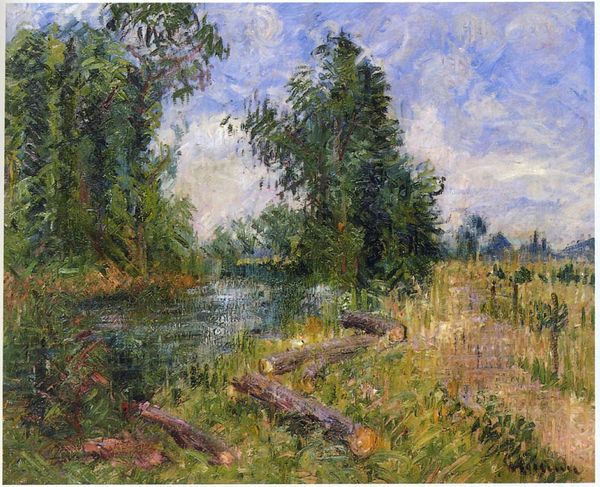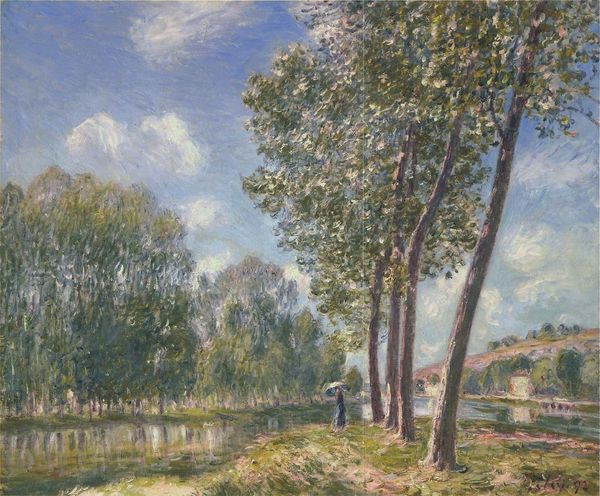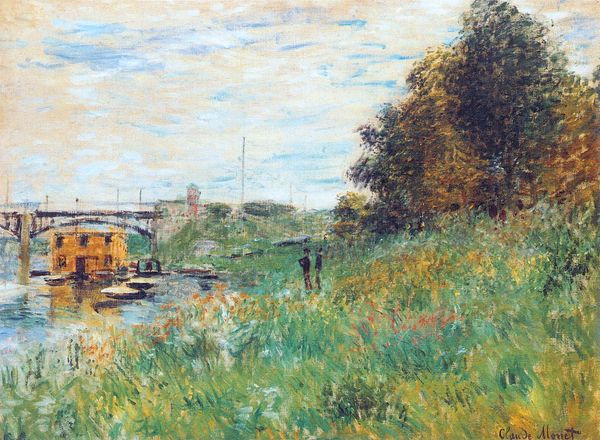
Dimensions: 127 x 186.69 cm
Copyright: Public domain
Editor: Here we have Alfred Sisley's "Canal du Loing, Chemin de Halage," painted in 1882. It's an oil on canvas, and the way the light hits the water and the foliage is just gorgeous. The material execution itself feels vibrant, so tangible...What strikes you most about it? Curator: I'm immediately drawn to those precisely rendered stacks of lumber. They're not just scenery, are they? Sisley's placement invites us to consider them as vital components of the economic and social fabric. It raises questions about labor, industry, and how raw materials shape the landscape. What’s the social implication of this type of art making? Editor: So you're saying it's not just a pretty picture of the countryside? But, how did the Impressionists challenge academic salon culture that valued mythological paintings rather than views of stacks of lumber in everyday rural areas? Curator: Exactly. Impressionism was radical precisely because it engaged with contemporary experience. These artists were concerned with the material conditions of modern life. It wasn’t about depicting gods and goddesses; it was about the tangible realities of a rapidly changing society. Can you see any suggestion of movement that echoes those rapid changes? Editor: The road... and the men who appear to be transporting wood by the water’s edge seem to be heading to a distant destination in pursuit of unknown fortunes. What do you think he tried to do differently in terms of material and style? Curator: Note the thick impasto, a conscious foregrounding of the paint itself as a material. It disrupts the illusionism, constantly reminding us that this is constructed. What appears as a quick sketch hides, I think, an intention to challenge the viewer’s eye. It democratizes both subject and approach, shifting from ideal forms to immediate, felt experience, and from careful representation to visibly present material handling. Editor: That's a really interesting point. It makes me see the painting in a completely different light. Now I can clearly see his vision, in which ordinary landscapes became tools of societal representation and cultural shift. Curator: Precisely. And isn't that the beauty of studying art?
Comments
No comments
Be the first to comment and join the conversation on the ultimate creative platform.

